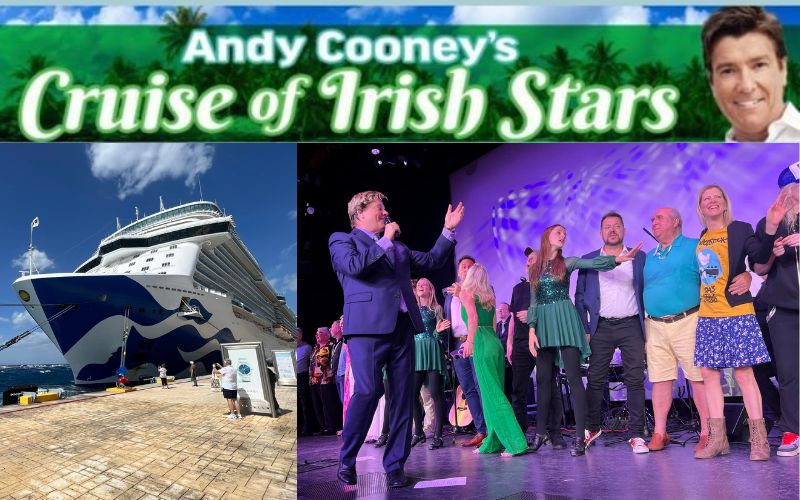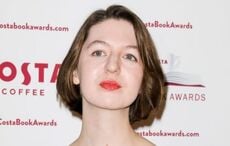From memorable performances in films like Rushmore, Groundhog Day and Lost in Translation, Bill Murray has been a Hollywood A-Lister for decades. He talks to CAHIR O'DOHERTY about his new Belfast-made film, City of Ember, produced by Tom Hanks and also starring rising young Irish star Saoirse Ronan and Tim Robbins.
BRIMMING with adventure and driven by the timely message that a little hope and courage can change your life, City of Ember is the first Belfast-made big budget blockbuster to ever hit the screens (it opens nationwide this Friday). Adapted from the famous children's book of the same name by Jeanne DuPrau, the new action flick for kids features a pot bellied Bill Murray, 58, in the signature role of the mayor of Ember, the strange underground city where he lords it over the ordinary citizens without a care.
It's a terrific villain's part for Murray, playing the bloated and completely selfish Mayor Cole, the first citizen of a bizarre world where no one ever dreams of questioning his authority. And, in fact, it was the grotesque aspects of the character that first interested him in the role.
"It was the chance to work with screenwriter Caroline Thompson that got me interested in the project," Murray tells the Irish Voice during an interview at the Waldorf-Astoria in New York last week.
"She wrote Edward Scissorhands and from the first time I met her, she's always been someone who interested me. I didn't know the book but my kids did, and they were stunned when I told them I was playing Mayor Cole."
Although over the years Murray has gained a reputation for occasionally being awkward with other actors and difficult in interviews - ominously, he arrived late for this one - in person it turns out that he is funny and thoughtful.
If his reputation precedes him, today it seems more than a little unfair. Talking with him, it's easy to see he has a low threshold for boredom, and if you can't keep him interested that could easily tilt over into mischief. The now famous dust up that he had with Lucy Liu on the set of Charlie's Angles probably was, you realize, due to the poor script rather than Murray's supposed temperament.
Waiting for his arrival, young Irish actress Saoirse Ronan, 14, flinches in her seat next to Oscar winner (for his work in Mystic River) Tim Robbins.
"Is there someone missing?" she suggests, cattily. When he swans in minutes later, Murray looks like a man who is always slightly lost no matter where he finds himself.
"The architect who designed the Waldorf-Astoria designed my home in Los Angles," Murray announces. "So walking through this place makes me feel like I'm at home. Like I never actually left. It's, uh, a little weird."
Murray, the fifth of nine children, grew up in a large Irish Catholic family in Wilmette, a suburb of Chicago, the son of Lucille Collins, a mail room clerk and Edward J. Murray II, a lumber salesman.
"Our house was a wreck," he recalls, "a constant claustrophobic mess."
Growing up in the 1960s in a family that had little money and more than its fair share of hardships, Murray's mother pressured each of her children to get jobs early on. As a teenager Bill often worked alongside his brothers as a caddy at the local golf course to pay for his tuition at Loyola Academy, a Jesuit high school.
Although nowadays he's one of the most sought after actors in Hollywood, back in the 1960s times were tough on both Murray and his family. His father had diabetes, one of his sisters had polio and his mother had several miscarriages. It was the kind of working class Irish American story that many others growing up at the time would instantly recognize.
To help them live though all the setbacks, Murray and his siblings - like generations of creative young Irish Americans before them - turned to art. As it turned out, three of his brothers also became actors: John Murray, Joel Murray and Brian Doyle-Murray. One of his sisters, Nancy, is an Adrian Dominican Sister in Michigan who travels around the country portraying St. Catherine of Sienna.
"There are four of us who've tried show business," says Murray. "Five if you insist on counting my sister the nun, who does liturgical dance."
After graduation, Murray attended Regis University in Denver, where he took pre-med courses. But he later dropped out after being arrested for possession of marijuana at Chicago's O'Hare Airport. The straight life was, he decided, not for him.
Ultimately he ended up as a writer and performer for National Lampoon, a comedy magazine in the seventies. That led to stints performing on Saturday Night Live with other legendary comedians like Dan Aykroyd, John Belushi and Gilda Radner.
Murray's decision to do City of Ember was the result of his interest in the screenwriter, the enthusiasm of his kids for the book and the chance to film in Ireland, where he could also indulge one of the great passions of his life - golf - in Northern Ireland and nearby Scotland. Ronan, herself Irish, agrees that the Belfast set was an attraction.
"It was great for me to work in Ireland with an Irish crew that were second to none," says Ronan. "And it was really nice to work in Belfast, because it's a place that I already knew."
Her co-star Robbins agrees. "I love Ireland. I've been there several times and I absolutely love it. The people are so vivid and interesting. I've been to all of it actually, north, south, east and west."
"Ah, but have you been to the northeast?" deadpans Murray. "Or to the southwest? Or the middle east?" he adds, cracking himself up.
What's most striking about Murray is how uncomfortable he is being interviewed, or being a celebrity, and with all almost all the trappings that come with being famous, in fact.
Ask him a foolish question about life in Hollywood and you'll see exactly what this means. He'll stare at you with a disdainful look that says, I wonder why you feel the need to ask me that. Then he'll talk about something else. You can see why journalists fear him.
Although City of Ember has its origins in the homemade nuclear shelters of the fifties, when an attack by the Soviets looked like a distinct possibility, in the imagination of the writer Jeanne DuPrau, the little air raid shelter she remembers hiding in has become an entire city powered by a failing generator. There's no choice but to find some way out of the gathering darkness. And it's the children - not the discouraged adults - that have the hope and faith to find a way out.
The process of making the film in Belfast was one that all three actors loved. "The extras were unlike any extras I've ever worked with," says Murray. "They were so dedicated to the film and the world we were creating. They often bring costume designers from one film to the next, but if I could I would bring these extras too. They were that good, that proud of the work."
In the era of Computer Generated Images (CGI) the relatively low tech approach of actually building an entire city in what was once the old Titanic shipyard in Belfast was an inspired idea. It gives the world of the film amazing depth, scale and dimension because you can see that the place actually exists.
"When you walk onto the set and see streets and buildings that are over 60 feet high much of your preparation work as an actor is already done for you," says Robbins. "The place had brinks, buildings, real streets, real doors and beautiful design work. People will be dazzled by the film."
Meanwhile, there's been a lot of talk in the industry about another sequel to one of Murray's most legendary films, Ghostbusters, reprising all of the original cast members. Would Murray sign on if the script was good?
"There are two guys writing a script. I have yet to see it. I'm more involved in trying to get the right dessert with my lunch today than discussing a sequel. It's possible. They have a great idea for the script. It could be fun."




Comments